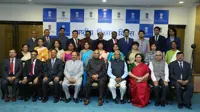Inequality rises in India
06 Dec 2011
India has become "less equal over time" and earnings inequality in the country has increased significantly since the early 1990s, OECD said in its report.
This has been the case in almost all emerging economies, including India, China, Argentina, Russia and South Africa, according to OECD.
"Brazil, Indonesia and, on some indicators, Argentina have recorded significant progress in reducing inequality over the past 20 years. By contrast, China, India, the Russian Federation and South Africa have all become less equal over time," OECD said.
India has experienced "significant" increase inequality over time, where the ratio between the top and the bottom deciles of the wage distribution has doubled since the early 1990s.
"The main driver has been an increase in wage inequality between regular wage earners, ie, contractual employees hired over a period of time," OECD pointed out.
However, OECD noted that inequality in the casual wage sector where workers are employed on a day-to-day basis has remained more stable.
India, the report says, has the highest headcount poverty rate of the seven countries, with about 42 per cent of its population still living on less than $1.25 per day.
"During the two decades to 2008, the fall in the extent of absolute poverty was particularly dramatic for Brazil, China and Indonesia, while India and South Africa recorded more modest reductions," the report said.
In order to bring down inequality as well as promote better jobs, these nations should follow a multi-pronged approach, including better incentives for more formal employment and preparation to finance higher social spending in the future, OECD noted.



.webp)

.webp)


.webp)
























